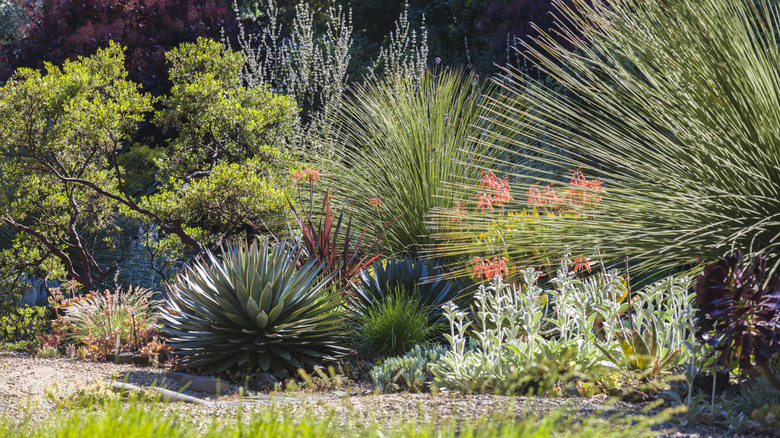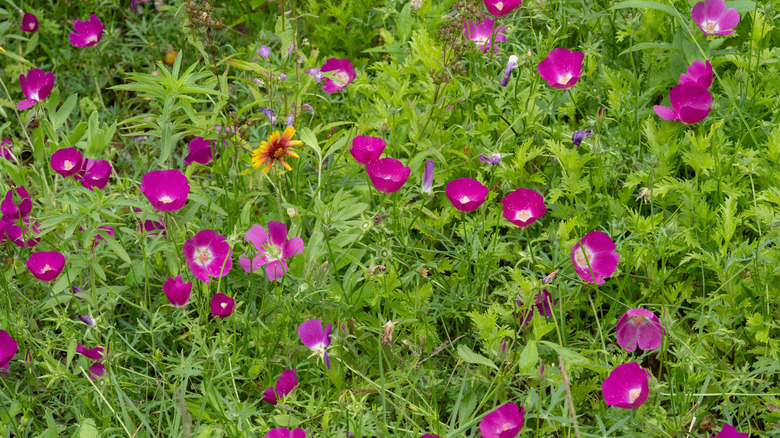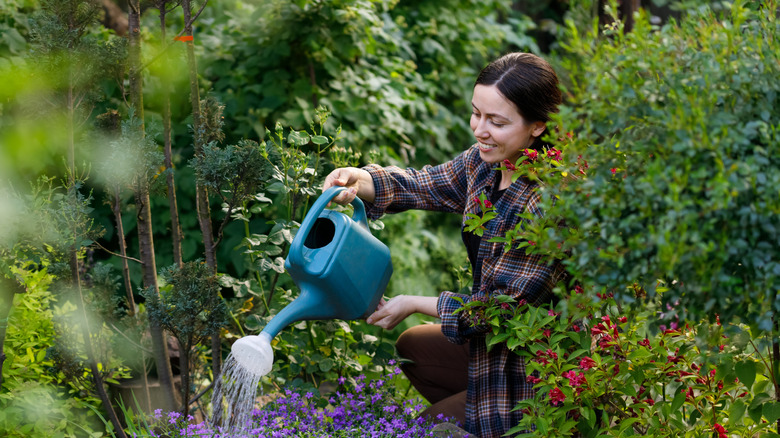The Eye-Catching Ground Cover Plant That's Easy To Grow And Drought-Tolerant
Some ground covers are good for filling space but don't add an aesthetic appeal to your garden. Others offer color, but require more water or maintenance than they're worth. If you've been looking for a plant that does both without the hassle, winecup (Callirhoe involucrata) might be exactly what your garden needs. This native perennial grows low to the ground, about 6 to 12 inches tall, and spreads up to 3 feet wide.
Winecup forms a soft, colorful mat that can cover slopes, rock walls, or other sunny, open spaces. Its tidy growth habit provides structure without overwhelming nearby plants. This ground cover grows neatly alongside other plants without taking over, and once established, it stands up to tough conditions with little effort on your part. Winecup stays visually striking throughout its blooming season, making it a standout instead of a space-filler. It's the kind of plant that works in almost any type of garden where you want vibrant color and low maintenance.
Why winecup is worth planting
Winecup is a great way to add a bold splash of color to your garden. This plant's vibrant flowers create a soft, eye-catching carpet that really makes a space pop. In early spring, around March or April, these purple, chalice-shaped flowers begin to bloom and gently sway in the breeze, adding movement and charm to your garden. The best thing about winecup is that it's one of the easiest plant to grow, even for beginners. With deep roots, it holds up well in dry, sunny areas and doesn't need much water once it's established. That makes it a smart pick for xeriscaping or for anyone looking to cut down on watering. Because it's a native perennial, winecup can handle a wide range of soil types like sandy, loamy, clay, and even poor or rocky soils. This adaptability means it's easy to grow and even easier to keep up with.
Plus, it's naturally resistant to pests and most diseases. The only thing to watch out for is crown rot, which can happen if your soil doesn't drain well. Its bright flowers attract bees and butterflies, which means you'll be supporting pollinators while making your garden more lively. Winecup grows well with Missouri primrose, lamb's ears, yarrow, columbine, daylilies, and prickly pear cactus, adding both color and variety to your space. And under the right conditions, winecup can also self-sow. So over time, it slowly spreads on its own, giving you even more coverage without extra work.
How to plant and grow winecup successfully
This ground cover thrives in even the harshest sun, so to get started on growing winecup, the first thing you'll need is a bright spot in your garden. While this plant can handle a bit of shade, it really thrives and blooms best when it gets plenty of sunlight. Winecup does well in USDA Zone 4 through 9, as long as the soil is well-draining. Just avoid heavy clay or soil that tends to stay soggy, as that can lead to crown rot and damage the roots. A helpful trick to increase the germination rate of seeds is to scarify the seeds by lightly roughing up the outer shell, which helps them sprout more easily.
When you're ready to plant, sow the seeds about ⅛ inch deep in late summer or early fall. Keep the soil moist at first as regular watering is important while the plant is growing. Once it's settled in, you can ease up on the watering, since winecup grows a deep taproot and becomes naturally tolerant to drought. And if you want to encourage fresh growth, cut back the foliage in early spring. It's a simple step that helps keep the plant looking its best.


